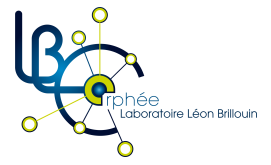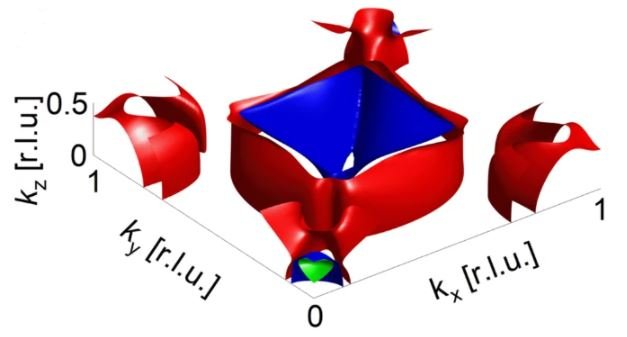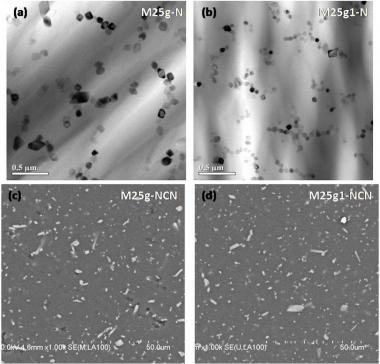Laboratoire Léon Brillouin
UMR12 CEA-CNRS, Bât. 563 CEA Saclay
91191 Gif sur Yvette Cedex, France
+33-169085241 llb-sec@cea.fr
Fabrizia Foglia, Quentin Berrod, Adam J. Clancy, Keenan Smith, Gérard Gebel, Victoria García Sakai, Markus Appel, Jean-Marc Zanotti, Madhusudan Tyagi, Najet Mahmoudi, Thomas S. Miller, John R. Varcoe, Arun Prakash Periasamy, Daniel J. L. Brett, Paul R. Shearing, Sandrine Lyonnard and Paul F. McMillan
Semipermeable polymeric anion exchange membranes are essential for separation, filtration and energy conversion technologies including reverse electrodialysis systems that produce energy from salinity gradients, fuel cells to generate electrical power from the electrochemical reaction between hydrogen and oxygen, and water electrolyser systems that provide H2 fuel. Anion exchange membrane fuel cells and anion exchange membrane water electrolysers rely on the membrane to transport OH− ions between the cathode and anode in a process that involves cooperative interactions with H2O molecules and polymer dynamics. Understanding and controlling the interactions between the relaxation and diffusional processes pose a main scientific and critical membrane design challenge. Here quasi-elastic neutron scattering is applied over a wide range of timescales (100–103 ps) to disentangle the water, polymer relaxation and OH− diffusional dynamics in commercially available anion exchange membranes (Fumatech FAD-55) designed for selective anion transport across different technology platforms, using the concept of serial decoupling of relaxation and diffusional processes to analyse the data. Preliminary data are also reported for a laboratory-prepared anion exchange membrane especially designed for fuel cell applications.
Philipp Kurzhals, Geoffroy Kremer, Thomas Jaouen, Christopher W. Nicholson, Rolf Heid, Peter Nagel, John-Paul Castellan, Alexandre Ivanov, Matthias Muntwiler, Maxime Rumo, Bjoern Salzmann, Vladimir N. Strocov, Dmitry Reznik, Claude Monney & Frank Weber
Electron-phonon coupling, i.e., the scattering of lattice vibrations by electrons and vice versa, is ubiquitous in solids and can lead to emergent ground states such as superconductivity and charge-density wave order. A broad spectral phonon line shape is often interpreted as a marker of strong electron-phonon coupling associated with Fermi surface nesting, i.e., parallel sections of the Fermi surface connected by the phonon momentum. Alternatively broad phonons are known to arise from strong atomic lattice anharmonicity. Here, we show that strong phonon broadening can occur in the absence of both Fermi surface nesting and lattice anharmonicity, if electron-phonon coupling is strongly enhanced for specific values of electron-momentum, k. We use inelastic neutron scattering, soft x-ray angle-resolved photoemission spectroscopy measurements and ab-initio lattice dynamical and electronic band structure calculations to demonstrate this scenario in the highly anisotropic tetragonal electron-phonon superconductor YNi2B2C. This new scenario likely applies to a wide range of compounds.
https://dx.doi.org/10.1038/s41467-021-27843-y
|
The confinement of high activity nuclear wastes requires their storage in safe and sustainable conditions. For this purpose, vitroceramic structures, which are both vitreous and crystalline, have been proposed, since they can have good performances by trapping radioactive elements in the crystalline phase. However, the confinement in such alumino-borosilicate nuclear glasses of molybdenum rich wastes (issued from the graphite-gas line of nuclear power plants) , raises the problem of their devitrification, affecting their confinement properties. Thus, at high concentration of molybdenum or when the loading rate is high, molybdate phases crystallize, and the control of the nature of these precipitates, by the choice of the compositions and of the synthesis processes, is essential for an effective control of the confinement properties of the glass. The study by a team of LSI of model materials of the vitrocristalline structure, shows that the presence of a CaMoO4 phase (Powellite) does not alter the structural evolution of the glassy phase under electronic excitations. |




